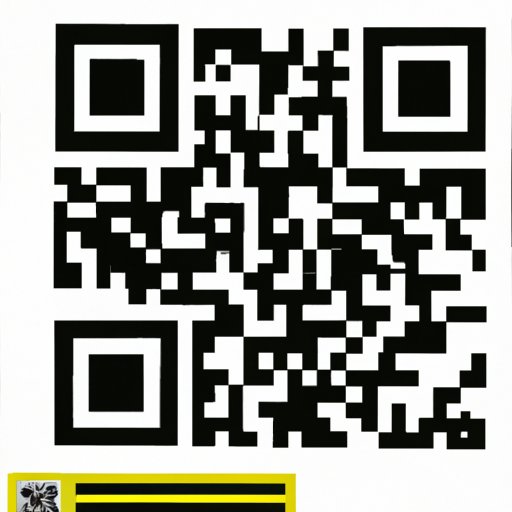I. Introduction
In today’s digital age, QR codes have become an essential part of modern marketing. They offer a quick and easy way to share information, making it easier than ever to connect with customers and potential clients.
In this article, we’ll explore the world of QR codes and explain how to create your own QR code. From choosing the right QR code generator to customizing the design, ensuring the code is scannable, and testing and using the QR code, we have you covered.
II. Choosing a QR Code Generator
The first step to creating a QR code is to choose a reliable QR code generator. With so many different generators available, it can be challenging to know which one is right for you.
When evaluating a QR code generator, consider factors such as:
- Cost – Some generators may be free, while others may require a paid subscription.
- Customization options – Look for generators that allow you to customize the design of the QR code.
- Scannability – Choose a generator that ensures scannability, such as by providing an error-correction level.
- Analytics – Some QR code generators offer analytics, such as tracking how many people scan your code and when.
- Supported formats – Make sure the generator supports the file format you need, such as PNG or JPEG.
III. Customizing the Design
While QR codes may seem straightforward, there’s still a lot of room for customization. Designing a visually appealing QR code is crucial, as it can help attract attention and make your code stand out from the sea of black-and-white codes out there.
When customizing your QR code, consider the following tips:
- Size – Make sure your QR code is large enough to be easily scanned but not so large that it becomes pixelated or hard to scan.
- Color – Consider using colors that match your brand or are visually appealing but be careful not to use colors that interfere with scannability.
- Logo – Adding your logo to the center of your QR code is a great way to brand your code and make it more visually appealing. Be sure to place it carefully so that it does not interfere with the scanning process.
- Background – Choose a background color or image that complements your QR code color scheme and makes your code stand out against other elements on the page.
IV. Ensuring the Code is Scannable
The most important aspect of creating a QR code is ensuring that it is scannable. Nothing is more frustrating for someone trying to scan your code than finding out that the code doesn’t work.
When creating your QR code, use a reliable generator that includes an error-correction level, which can help ensure that the code is scannable even if a portion of it becomes damaged or obscured.
After creating your QR code, test it using multiple devices and QR code scanners to ensure that it works consistently. If you experience an issue with scannability, there are a few troubleshooting tips to consider:
- Resize your code – If your QR code is too small, it may become pixelated and difficult to scan. Try making it larger and see if that helps.
- Avoid borders – Adding a border around your QR code may be visually appealing, but it can interfere with scannability. Try removing the border and testing the code again.
- Use the right format – When saving your QR code, make sure that you’re using the correct file format, such as PNG or JPEG. Some scanners may only be able to read certain formats.
V. Testing and Using the QR Code
After creating and customizing your QR code, it’s time to test it and start using it. The first step is to scan the code yourself to make sure it works correctly. Once you’ve confirmed that the code is scannable and takes you to the correct destination, it’s ready to use.
When storing and sharing your QR code, consider the following tips:
- Save your code in a high-resolution format – This will ensure that the code looks clear and crisp as it’s shared across different platforms and devices.
- Share the code across different channels – Consider sharing your QR code across different social media channels, your website, and email marketing campaigns to reach a broader audience.
- Make sure the destination is mobile-friendly – If the destination of your QR code is not mobile-friendly, people may not be able to access it easily on their devices. Test the destination on different devices and make necessary changes if needed.
VI. Conclusion
Creating a QR code can be a simple but effective way to connect with customers and share information. By choosing the right QR code generator, customizing the design, ensuring scannability, and testing and using the QR code, you can create a visually appealing and reliable QR code that enhances your marketing efforts and drives results.
Remember to keep our tips and tricks in mind to make sure your QR codes are always scannable, visually appealing, and reliable. With the right QR code strategy, you can take your marketing efforts to the next level.
